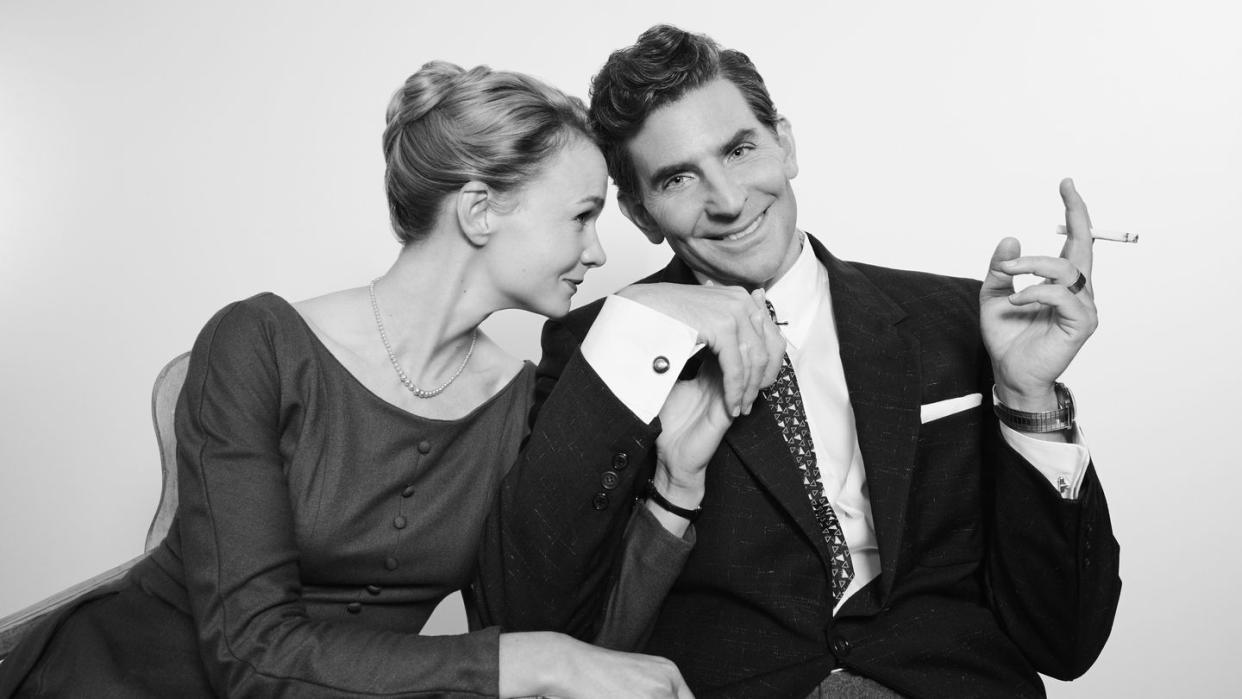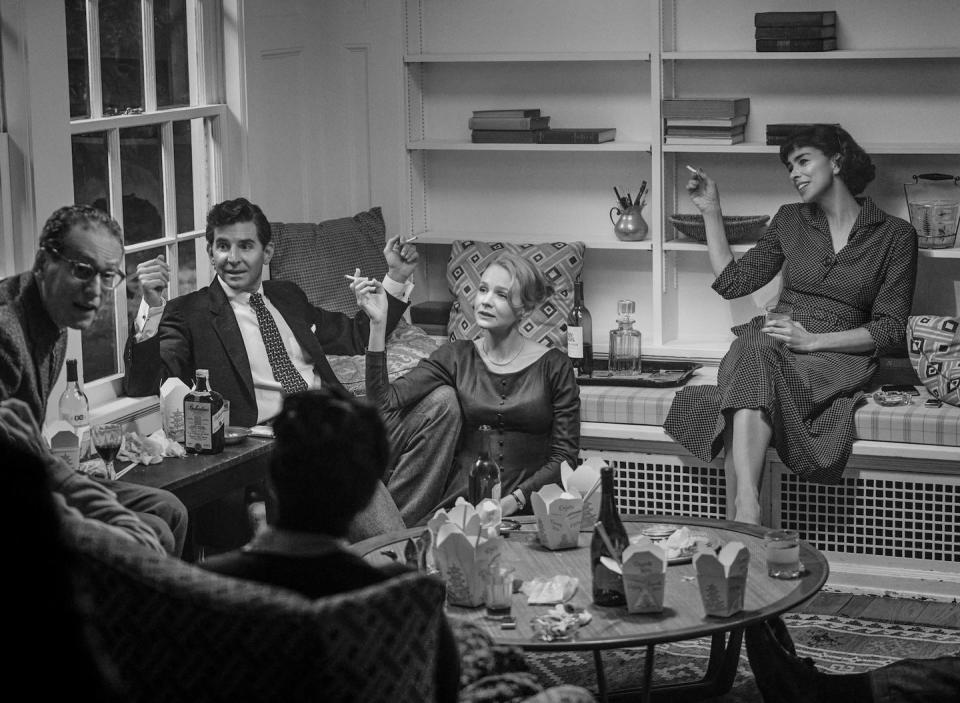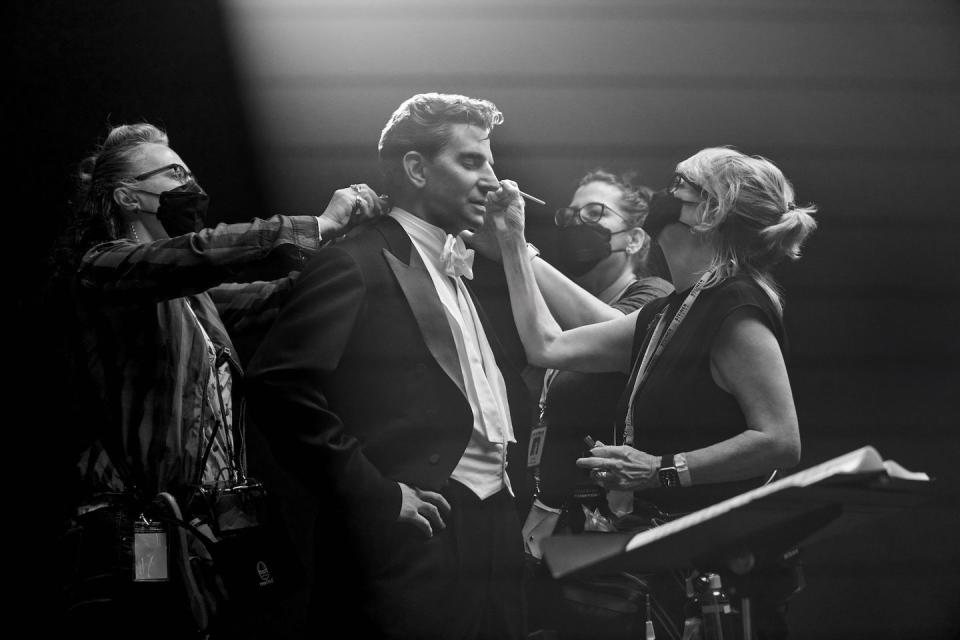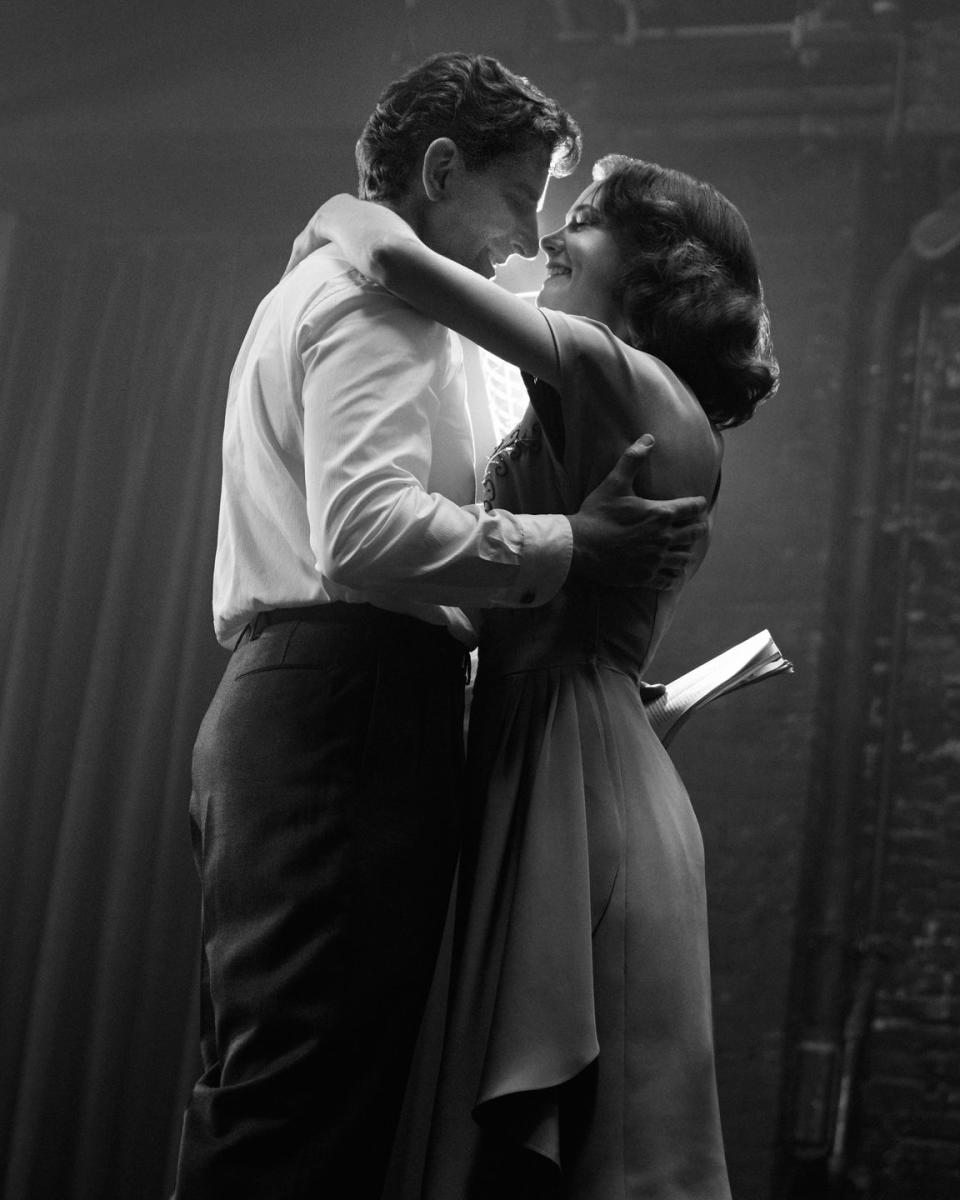How a Special Chanel Collaboration Helped Bring "Maestro" to Life

- Oops!Something went wrong.Please try again later.
- Oops!Something went wrong.Please try again later.
- Oops!Something went wrong.Please try again later.
- Oops!Something went wrong.Please try again later.
Costume designer Mark Bridges is a pro at 20th century period dress—he’s won two Academy Awards and two BAFTA’s for it, including The Artist in 2011 Phantom Thread in 2017. So when it comes to costuming the sweeping, multi-decade romance between Leonard and Felicia Bernstein in the new Bradley Cooper-helmed biopic Maestro, audiences can expect no button left unsown, and no hemline left unaltered. Come for the captivating performances and stellar chemistry between Cooper and Mulligan, but stay for the divine and intricate costuming too. The film, which is already garnering Oscar buzz, is streaming on Netflix now.
We caught up with the multi-award-winning costume designer for a chat about costuming Carey Mulligan, collaborating with Chanel for a special look in the film, and the virtues of good old-fashioned research.
I think it’s interesting to costume a film about real-life people who were extremely famous not that long ago, relatively speaking. What was your research process like for this?
I began with Google Images to see what was interesting—to see different periods of Leonard and Felicia Bernstein’s lives, and look for rare pictures of them at different times. It’s difficult to find pictures of them for the early part of their relationship in the mid-1940’s because photographs weren’t taken a mile a minute the way they are today. Then you put together a chronology, or a period of time, and from there it’s easier to go on a flight of fancy from the script. I also have quite an extensive library—I’ve inherited people's libraries.
What do you mean by library?
A lot of costume design books are out of print, and not everything has been committed to the internet yet. There are still things that are only available on vintage printed pages—periodicals, obscure books, and deeper catalogues of photographs that I’ve been bequeathed over the years. I’m having bookcases built as we speak.
It’s such a romantic image, the costume designer pouring over these arcane books, looking for the right reference for a lapel or hemline.
It broadens the scope of the research you’re able to do, and you’re able to include obscure things. Because the Bernsteins lived such a well-documented life, you might be able to find obscure articles from Look magazine about “a day in the life of Mrs. Maestro,” like where she got her hair done or the designers she liked. I come from the school where we mostly did our research on paper.


How much of your costumes for Maestro were built, versus how much were sourced or vintage or borrowed, so forth?
80% was built. You need everything to look new, particularly the women’s—the fabrics just don’t always hold up with vintage, or they’re not the right size or the right color. A lot of times, actual fashion itself isn’t necessarily photogenic. So I’ll find a garment from the period and use them as a touchstone, and recreate them in natural fabrics. For Carey Mulligan, we probably made 95% of her clothes. You find prototypes, you find what works, but then you remake them so they’re crisp and fresh and believable. I had that experience with Phantom Thread as well—things that were interesting but had to be made to look as if they had just come out of the work room.
What was it like to costume Carey Mulligan? Was that more of a collaboration or did she let you run free?
First and foremost she’s an actress, and a very thoughtful actress. It was always about whether the costume speaks to the character and to the moments. I have to say it was a very satisfying, fun collaboration to work with her. The very first costume where we meet her is this 1940’s dress with typical beading of that time. Selling the 40’s with today’s eyes is a little different, but we found it in a natural fabric that moves right.
Are the 1940’s hard to costume?
The sensibility in the 40’s worked in such a weird way. If you look at some of the shoulders on some of the women’s fashion, they’re enormous. There was a real sense during World War II of “we’re all fighting in the war,” broadening the shoulder, slimming the hip—to to the contemporary eye it almost looks comical because it’s so extreme. I try to be as faithful as possible to make it believable for the period, but sometimes there are extreme things you need to rein in a bit to make it accessible to a contemporary audience.
Were there any looks you were especially proud you got right?
The Chanel suit she wears was a nice fortuitous collaboration with Chanel. It was in the script and I thought it was a good idea. We asked if they wanted to collaborate, and they sent us a prototype and some choices of fabrics and trims, and they sent us some beloved Chanel buttons, but allowed me the latitude to choose fabrics and trims and which color for the blouse and lining. I had a brilliant cutter who looked at the prototype they sent from France and recreated the Chanel suit for us. Getting that right was something I was really dedicated to, and luckily I had the support of Chanel and a cutter who could do it.

How much "stuff" did it take to costume Maestro?
It was a lot. I brought a lot of stuff from LA for my background actors. I brought like eighty large shipping cartons from LA to New York. It was all pulled to have a range of sizes of 1940’s suits. We have an audience in Carnegie Hall, we have a Carnegie Hall afternoon orchestra, and we need a range of sizes to fit whoever came in. And then tuxedos and evening gowns. They had to truck it across the country because ultimately it was safer and most cost effective.
Was there anything from your costume department that your cast tried to pilfer?
This was a particularly non-larcenous group. They loved ‘em, they lived in ‘em, but they left ‘em at work. I was working with pros who can leave their work at work.
This interview has been edited and condensed for clarity.
You Might Also Like

